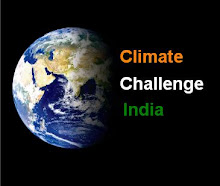SUITABLE FOR GRADE LEVELS:
8th standard and above, depending on syllabus and level of preparation of students.
Overview:
In this lesson, students connect the concepts of climate, climate change, habitat, ecosystems, latitudes, and human action to the spread of diseases. They will analyze a colour map to synthesize various kinds of information to understand the geography of malaria and how it is expected to change as climate changes.
Connections to the Curriculum:
Overview:
In this lesson, students connect the concepts of climate, climate change, habitat, ecosystems, latitudes, and human action to the spread of diseases. They will analyze a colour map to synthesize various kinds of information to understand the geography of malaria and how it is expected to change as climate changes.
Connections to the Curriculum:
- Main: Geography
- Others: Biology, Health, Food, Environmental Studies, and others. [Depends on the curriculum followed: ICSE, CBSE, etc.]
Time:
3 class periods of 40 minutes each
Materials:
3 class periods of 40 minutes each
Materials:
- A printout of the map provided at the very bottom of this posting after the "Shabaash, India!"(malaria-map.jpg)
- A good atlas (with maps of global population densities, ecosystems, rainfall patterns, and temperatures)
- Writing and drawing materials
- Wall maps/posters of mosquitos and the diseases they can spread
Objectives:
Students will:
Students will:
- read maps and identify areas and countries of the regions marked;
- correlate climate, latitude, land cover, and population density;
- find out about the diseases spread by mosquitos, particularly malaria; and
- write down observations they make in this exercise in English and any non-English language they may be learning, especially in their native language (if it is not English).
Geographic Skills:
- Acquiring Geographic Information
- Organizing Geographic Information
- Answering Geographic Questions
- Analyzing Geographic Information
S u g g e s t e d P r o c e d u r e
1st period: Engage students in a discussion on infectious diseases. Focus them on some basic facts about malaria -- causes, symptoms, consequences, and treatment. [Teacher resource online: http://www.antigenics.com/diseases/malaria.html ]
2nd period:
- Where does malaria occur in the world?
- On the malaria map given for this unit, have the students label the countries where malaria is prevalent.
- Next have the students make observations of the things that are common to these countries:
- Climate (humidity and temperatures especially)
- Climate type(s)
- Latitudes in which the countris are located
3rd period:
- Briefly tell them about global warming.
- Causes: Global temperatures are rising largely due to human actions such as deforestation, pollution, etc.
- Consequences: Climate and weather are changing rapidly. This leads to changes in the ecosystems. As areas of warmth increase, organisms of warm areas have more places to live in. This means they spread farther.
- Map: Look at the dark areas (red areas if you use a colour printout) where malaria is expected to spread by 2050.
- Ask them to describe the changes using geographic vocabulary (latitudes, ecosystems, climate areas, country names, etc.) and then write these down.
Related Links:
- Antigenics -- information about malaria [ http://www.antigenics.com/diseases/malaria.html ]
- UNEP/GRID Arendal: Climate change and Malaria, scenario for 2050 [ http://maps.grida.no/go/graphic/climate_change_and_malaria_scenario_for_2050 ]
"Shabhaash, India!"
For her passion and vision.
For her powerful call to action.
For being the voice of a generation and more.
-------------------------------------------------------------
Malaria map for lesson unit:
(Click on the image to open a large version;
then, right click + select "save image as...")
For her powerful call to action.
For being the voice of a generation and more.
-------------------------------------------------------------
Malaria map for lesson unit:
then, right click + select "save image as...")
Please note:
I have used the National Geographic's Xpeditions lesson plan format (of which I am a great admirer) with some modifications. While this unit is intended for teachers in India, anyone anywhere can use it. For use in the U.S.A., the appropriate National Geography Standards can be easily linked.







